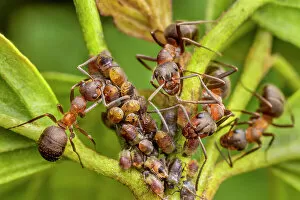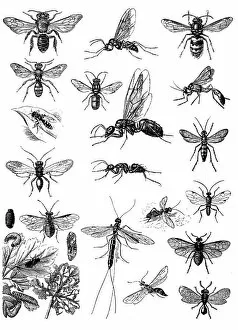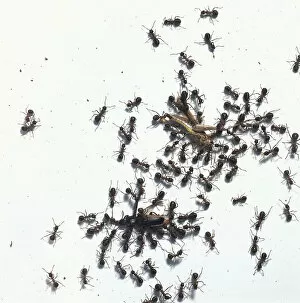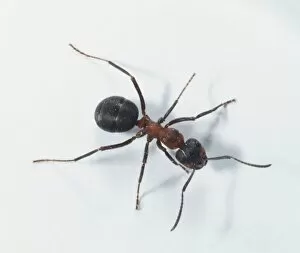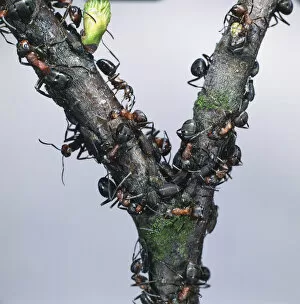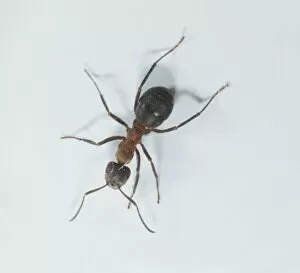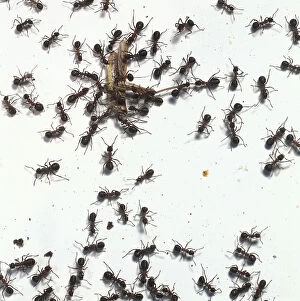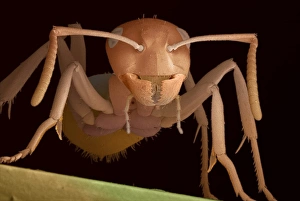Wood Ant Collection
Wood ants, also known as Formica lugubris and Formica rufa, are fascinating creatures that play important roles in their ecosystems
All Professionally Made to Order for Quick Shipping
Wood ants, also known as Formica lugubris and Formica rufa, are fascinating creatures that play important roles in their ecosystems. These industrious insects can be found in various parts of the world, including Buckinghamshire, England, UK. One captivating image shows a wood ant holding a microchip under an SEM (scanning electron microscope), highlighting the intricate details of this tiny creature. This close-up view allows us to appreciate the complexity and beauty of these remarkable ants. Another intriguing behavior exhibited by wood ants is their unique relationship with aphids. Northern hairy wood ant workers delicately stroke the backs of aphids with their antennae, stimulating them to produce droplets of honeydew. The ants then collect this sweet substance for nourishment. It's a beautiful example of nature's interconnectedness and mutualistic relationships. In addition to their interactions with other organisms, wood ants have been observed on Waxcap fungus in Buckinghamshire. This symbiotic association showcases how these insects interact with different elements within their environment. Historical illustrations from c. 1860 depict colorful wood ants alongside other insect species like bees. These images provide insights into how people have long been fascinated by these small but mighty creatures. Wood Ants' nests can be found in Abernethy forest located in Speyside Scotland – a testament to their ability to adapt and thrive in diverse habitats. A chromolithograph from 1884 showcases the vibrant red coloration of one particular species - Red Wood Ants - capturing both its visual appeal and scientific significance at that time.


